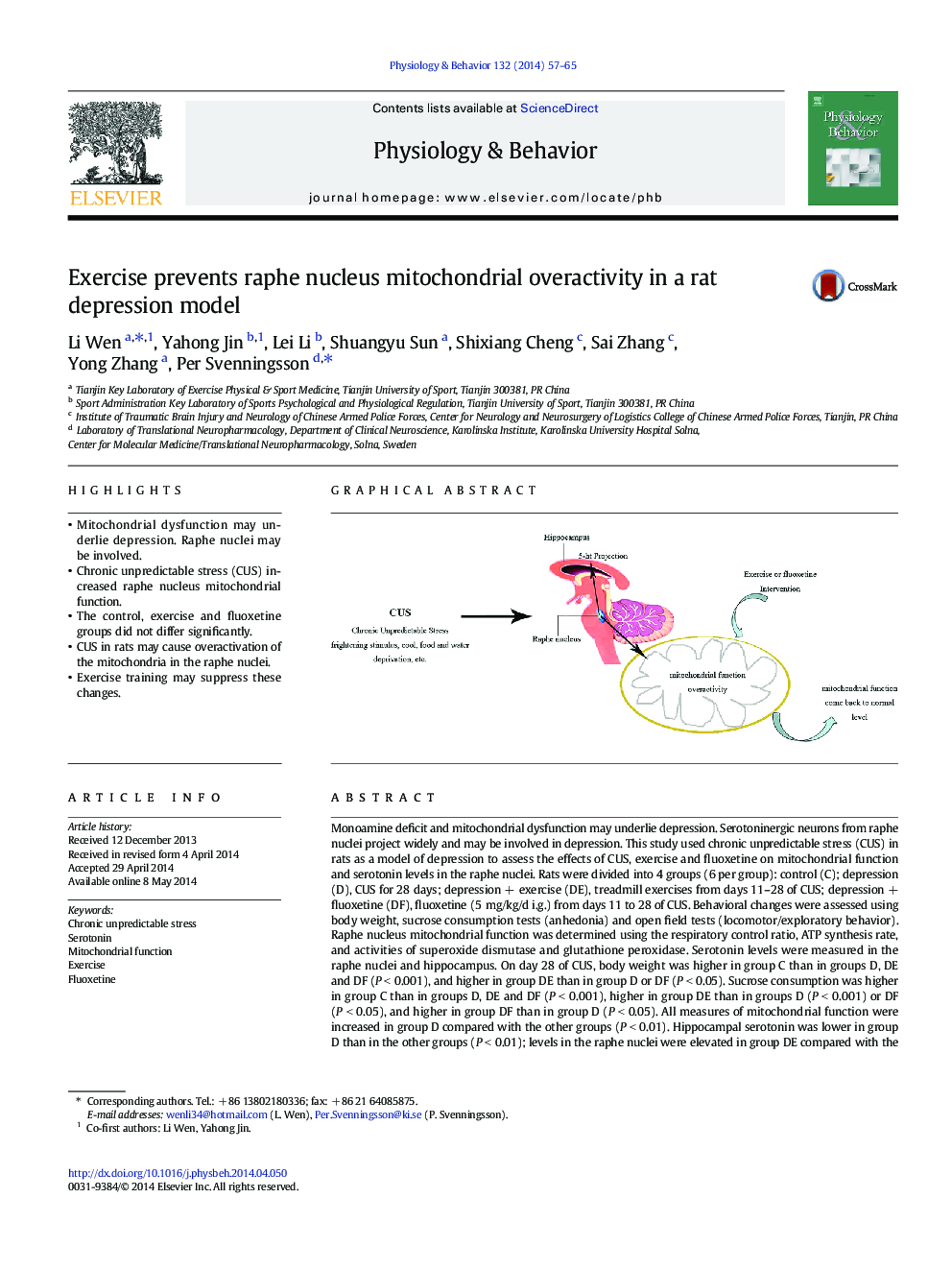| کد مقاله | کد نشریه | سال انتشار | مقاله انگلیسی | نسخه تمام متن |
|---|---|---|---|---|
| 2844279 | 1571185 | 2014 | 9 صفحه PDF | دانلود رایگان |
• Mitochondrial dysfunction may underlie depression. Raphe nuclei may be involved.
• Chronic unpredictable stress (CUS) increased raphe nucleus mitochondrial function.
• The control, exercise and fluoxetine groups did not differ significantly.
• CUS in rats may cause overactivation of the mitochondria in the raphe nuclei.
• Exercise training may suppress these changes.
Monoamine deficit and mitochondrial dysfunction may underlie depression. Serotoninergic neurons from raphe nuclei project widely and may be involved in depression. This study used chronic unpredictable stress (CUS) in rats as a model of depression to assess the effects of CUS, exercise and fluoxetine on mitochondrial function and serotonin levels in the raphe nuclei. Rats were divided into 4 groups (6 per group): control (C); depression (D), CUS for 28 days; depression + exercise (DE), treadmill exercises from days 11–28 of CUS; depression + fluoxetine (DF), fluoxetine (5 mg/kg/d i.g.) from days 11 to 28 of CUS. Behavioral changes were assessed using body weight, sucrose consumption tests (anhedonia) and open field tests (locomotor/exploratory behavior). Raphe nucleus mitochondrial function was determined using the respiratory control ratio, ATP synthesis rate, and activities of superoxide dismutase and glutathione peroxidase. Serotonin levels were measured in the raphe nuclei and hippocampus. On day 28 of CUS, body weight was higher in group C than in groups D, DE and DF (P < 0.001), and higher in group DE than in group D or DF (P < 0.05). Sucrose consumption was higher in group C than in groups D, DE and DF (P < 0.001), higher in group DE than in groups D (P < 0.001) or DF (P < 0.05), and higher in group DF than in group D (P < 0.05). All measures of mitochondrial function were increased in group D compared with the other groups (P < 0.01). Hippocampal serotonin was lower in group D than in the other groups (P < 0.01); levels in the raphe nuclei were elevated in group DE compared with the remaining groups (P < 0.001). CUS in rats may cause overactivation of the mitochondria in the raphe nuclei, and exercise training may suppress these changes.
Figure optionsDownload as PowerPoint slide
Journal: Physiology & Behavior - Volume 132, 10 June 2014, Pages 57–65
